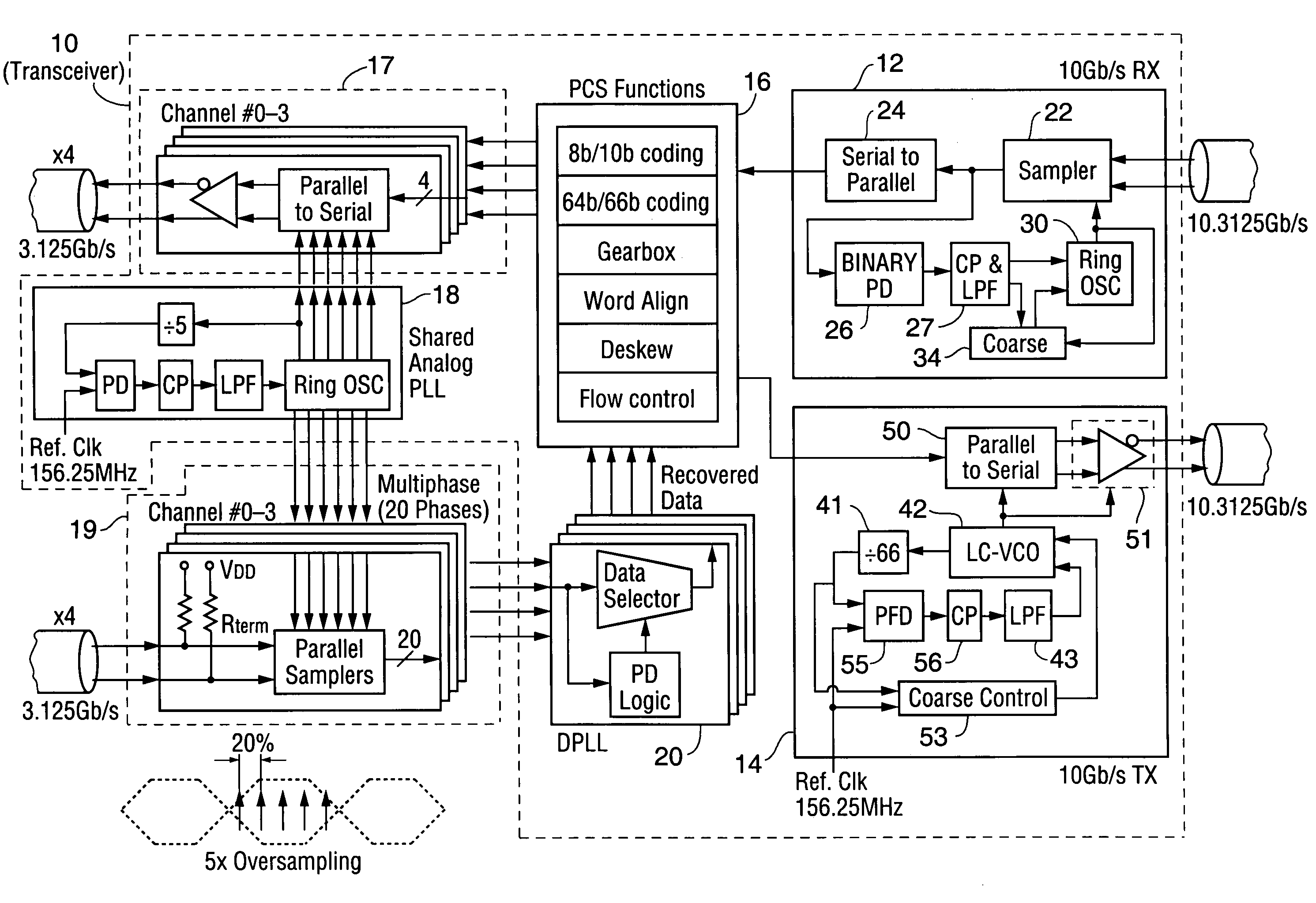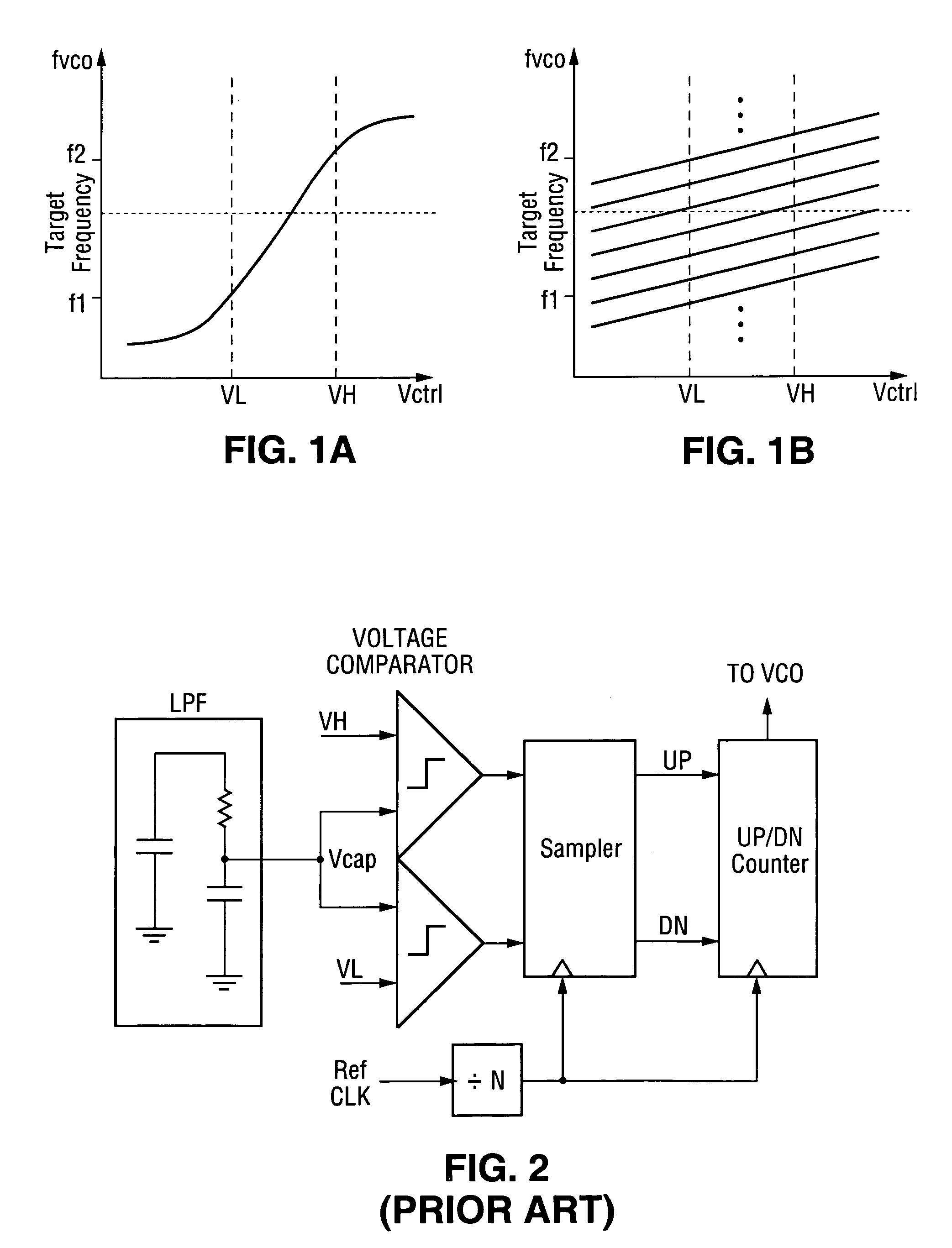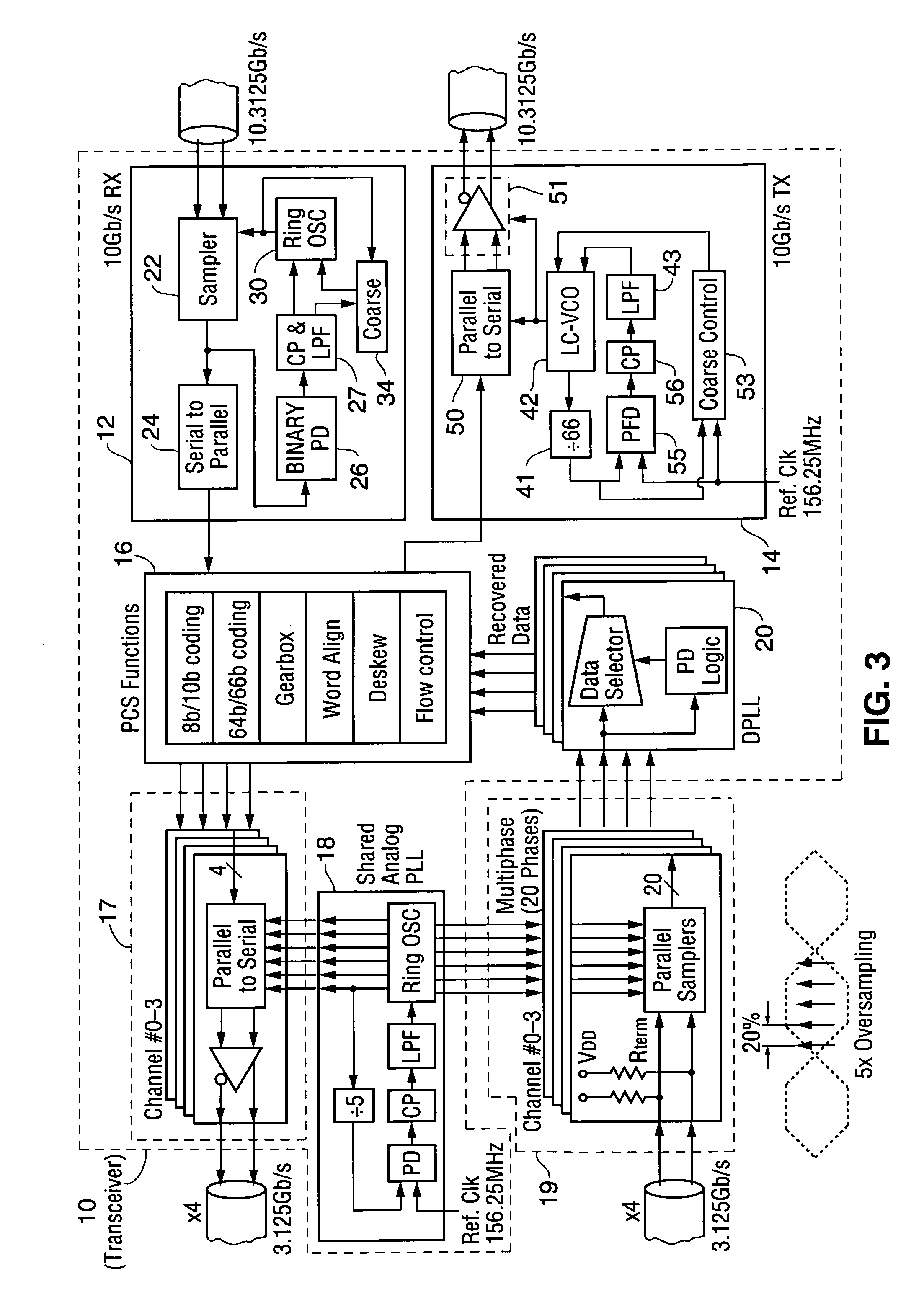Phase lock loop with coarse control loop having frequency lock detector and device including same
a phase lock and coarse control technology, applied in pulse automatic control, digital transmission, pulse technique, etc., can solve the problems of high noise sensitivity of pll, inability to generate appropriate control signals, and design challenges, and achieve good portability
- Summary
- Abstract
- Description
- Claims
- Application Information
AI Technical Summary
Benefits of technology
Problems solved by technology
Method used
Image
Examples
Embodiment Construction
[0053]FIG. 3 is a block diagram of an integrated circuit implementation of a 10 Gb Ethernet transceiver which is an embodiment of the invention. Transceiver chip 10 of FIG. 3 includes a 10.3125 Gb / s Serializer / Deserializer (SerDes) including 10.3125 Gb / s receiver 12 and 10.3125 Gb / s transmitter 14, a four-layer 3.125 Gb / s SerDes including four-layer 3.125 Gb / s transmitter 17, four-layer 3.125 Gb / s receiver 19, and four-layer digital phase lock loop (DPLL) circuitry 20, and physical coding sublayer (PCS) circuitry 16 between the 10.3125 Gb / s SerDes and the 3.125 Gb / s SerDes. Transmitter 14 is configured to transmit over a serial link a differential signal indicative of a bit stream having data rate 10.3125 Gigabits / second. Receiver 12 is configured to receive (from a serial link) and sample a differential signal indicative of a bit stream having data rate 10.3125 Gigabits / second. Transmitter 17 is configured to transmit four differential signals, each over a different serial link, ea...
PUM
 Login to View More
Login to View More Abstract
Description
Claims
Application Information
 Login to View More
Login to View More - R&D
- Intellectual Property
- Life Sciences
- Materials
- Tech Scout
- Unparalleled Data Quality
- Higher Quality Content
- 60% Fewer Hallucinations
Browse by: Latest US Patents, China's latest patents, Technical Efficacy Thesaurus, Application Domain, Technology Topic, Popular Technical Reports.
© 2025 PatSnap. All rights reserved.Legal|Privacy policy|Modern Slavery Act Transparency Statement|Sitemap|About US| Contact US: help@patsnap.com



